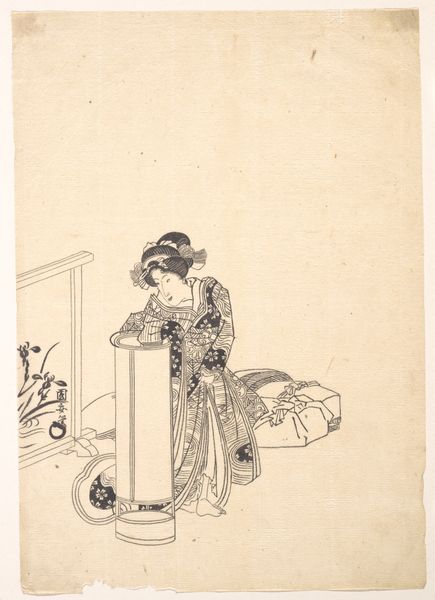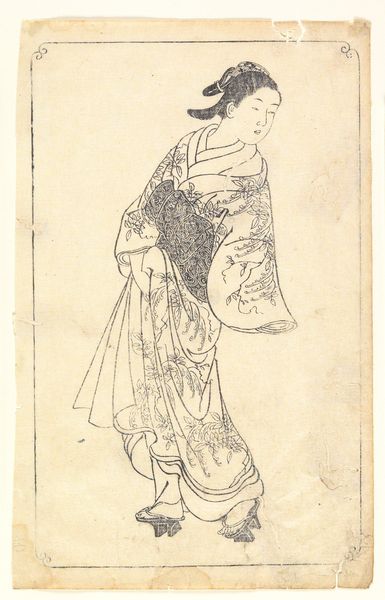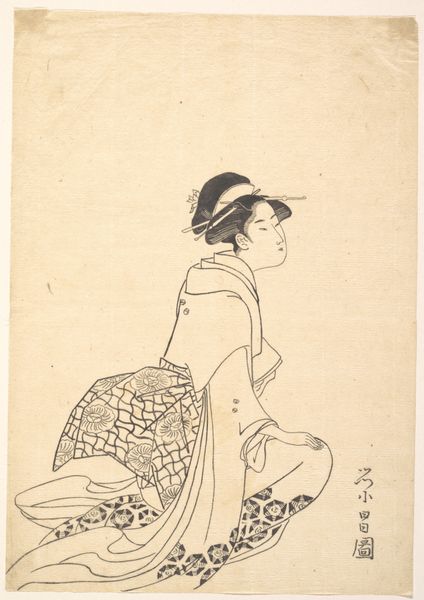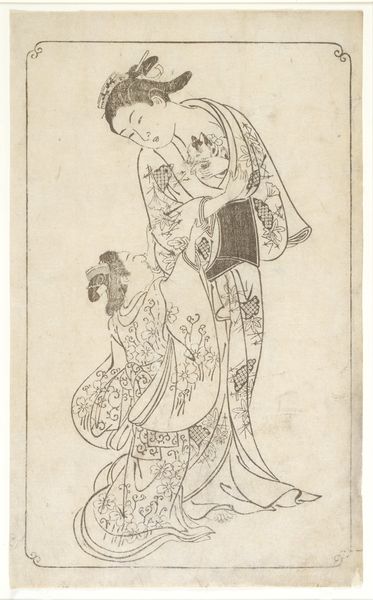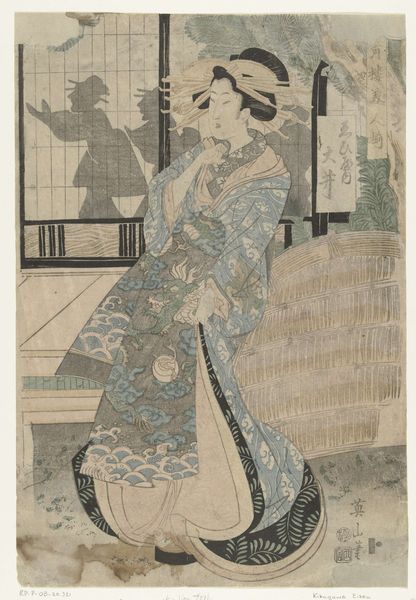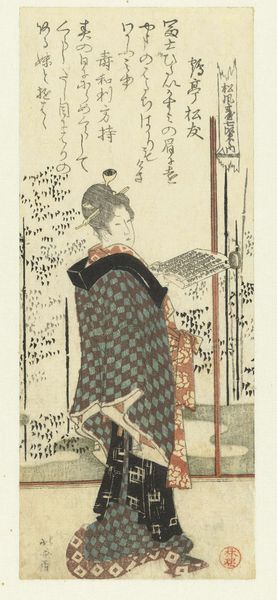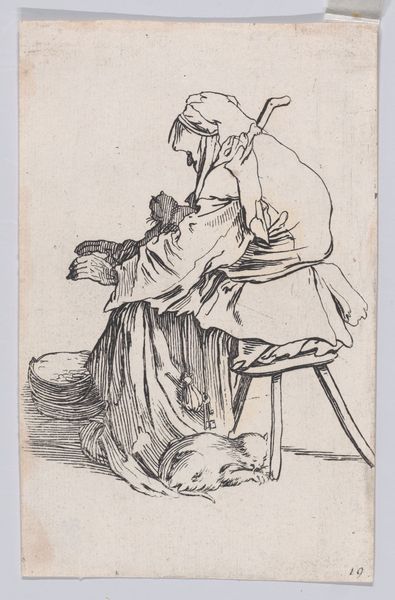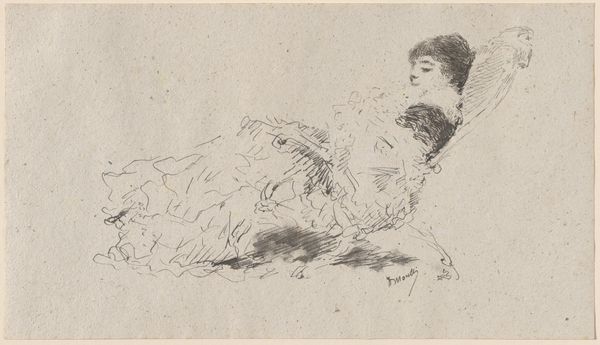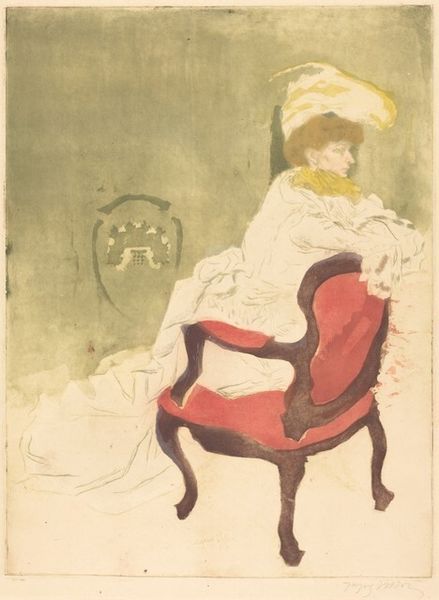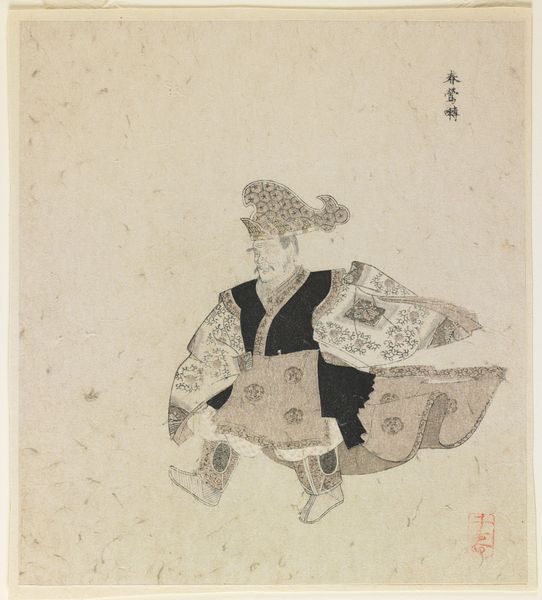
Courtesan or Actor as Courtesan Pouring Tea by the Light of a Lantern 1769 - 1825
0:00
0:00
#
portrait
# print
#
asian-art
#
ukiyo-e
#
genre-painting
Dimensions: H. 10 1/2 in. (26.7 cm); W. 7 7/16 in. (18.9 cm)
Copyright: Public Domain
Curator: Welcome. Here we see a work by Utagawa Toyokuni I, a woodblock print called "Courtesan or Actor as Courtesan Pouring Tea by the Light of a Lantern," created sometime between 1769 and 1825. What's your immediate response? Editor: The first thing I notice is how utterly still it feels. There's a quiet formality even though she’s pouring tea in what seems like an intimate setting lit by a lantern. It’s like capturing a paused moment within a ritual. Curator: Indeed. The composition utilizes contrasting patterns to guide the viewer's eye. Notice the intricate designs on her robe against the relative simplicity of the lantern and the floor space. This contrast not only provides visual interest but also accentuates the figure's presence. We must also observe the graphic strength in line as an independent aesthetic. Editor: I love the way the lantern’s light is suggested, almost palpable despite it just being lines. It’s minimalist but it creates such an atmosphere, this sort of intimate shadow-play. The texture in the black areas of the garment are gorgeous. Curator: Precisely. This speaks to the artist’s command of the ukiyo-e tradition and the expressive possibilities inherent in a seemingly simple line. He is not just depicting a scene; he's curating a specific viewing experience using formalized gestures. We see a masterful exercise in restraint to emphasize a very important concept. Editor: Absolutely, it's like a snapshot of controlled chaos—all these lines, the busy kimono, the suggestion of story without revealing too much. It's making me think about how performance itself is staged with similar gestures, in these limited yet telling forms. There is almost a cinematic intimacy that transcends the artwork's date. Curator: Ultimately, what endures here, I believe, is the subtle but significant negotiation between the decorative and the descriptive, which gives insight into our perception and expectation of a reality in constructed art forms. Editor: Well, from my perspective, beyond its structural perfection, the image conjures something in me—a dream almost—suspended there between theater and truth in a single, fleeting sip of tea. I'm almost there. I'm having trouble letting it go.
Comments
No comments
Be the first to comment and join the conversation on the ultimate creative platform.
